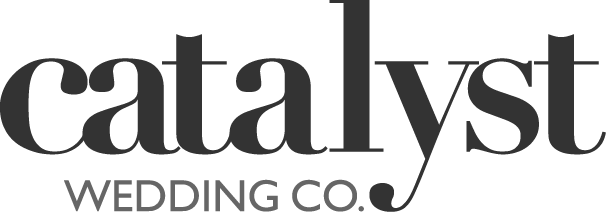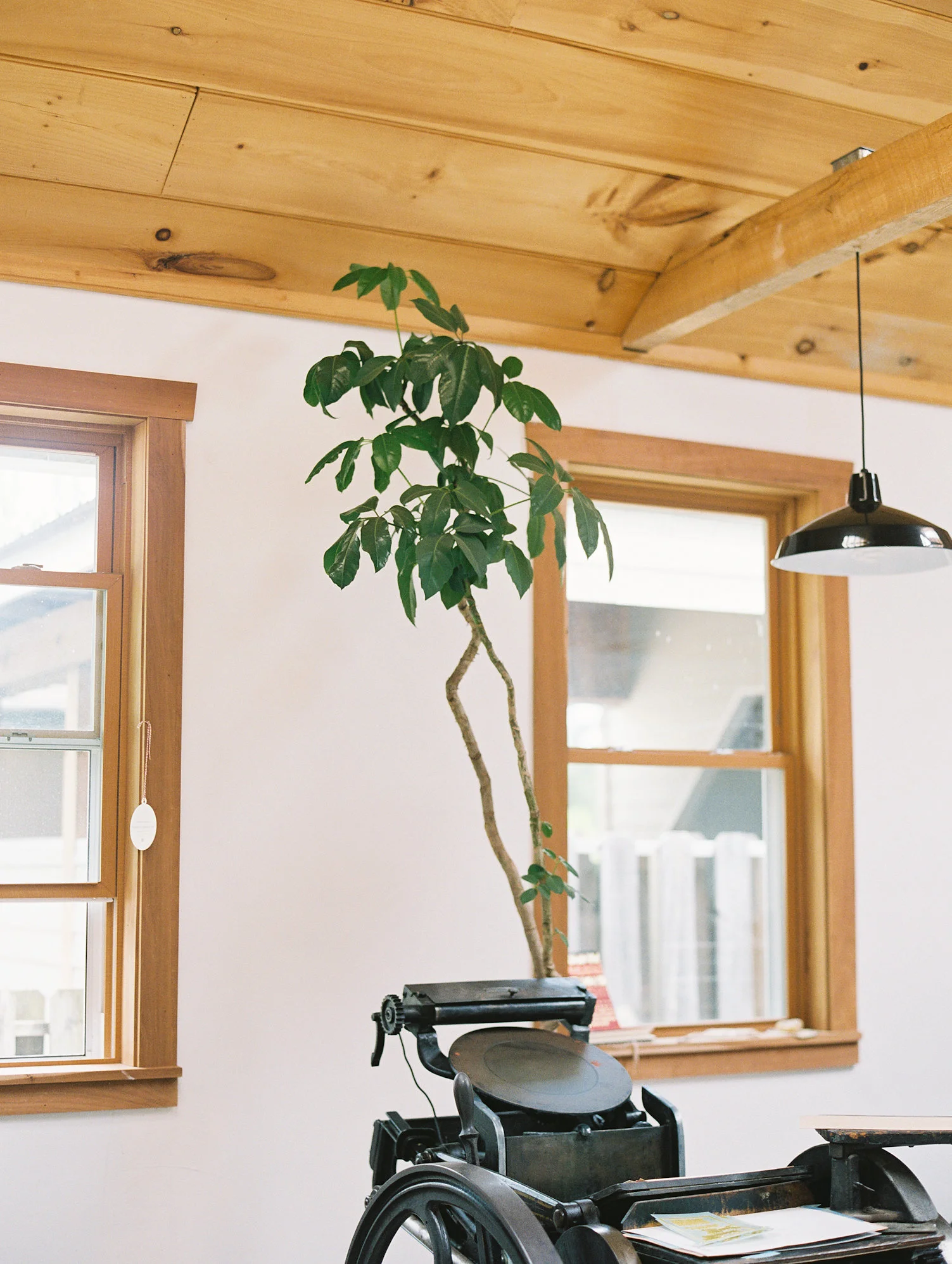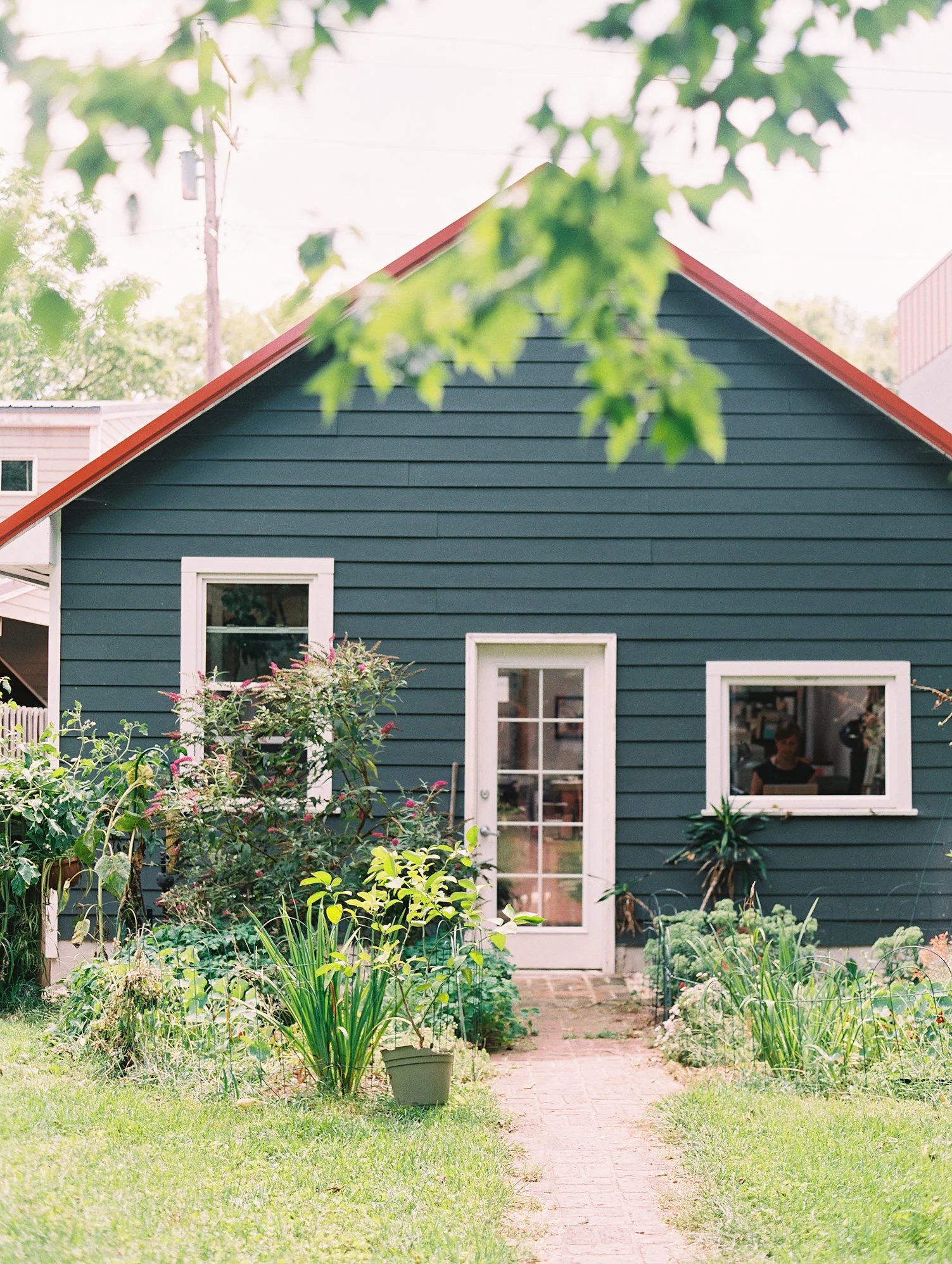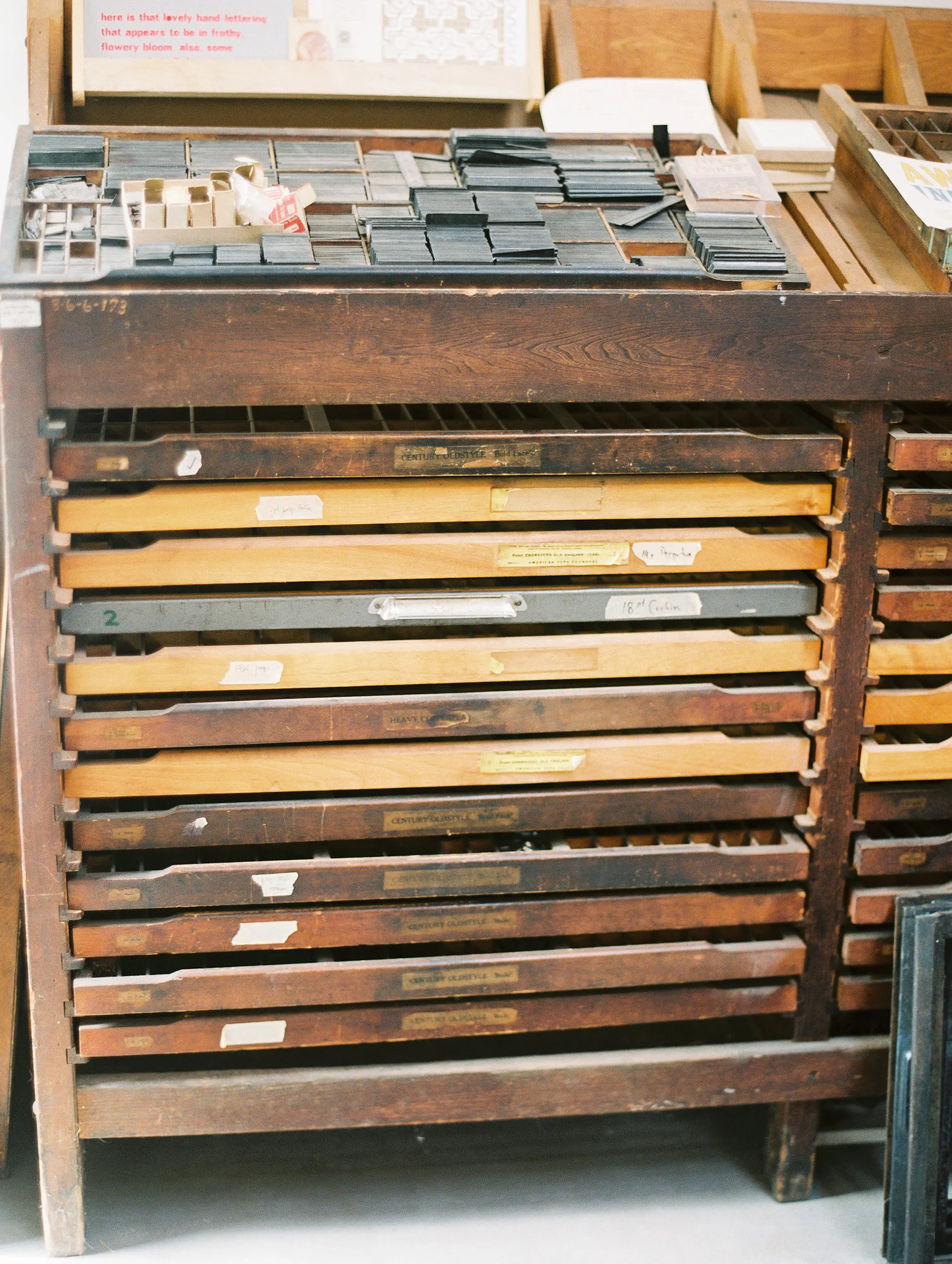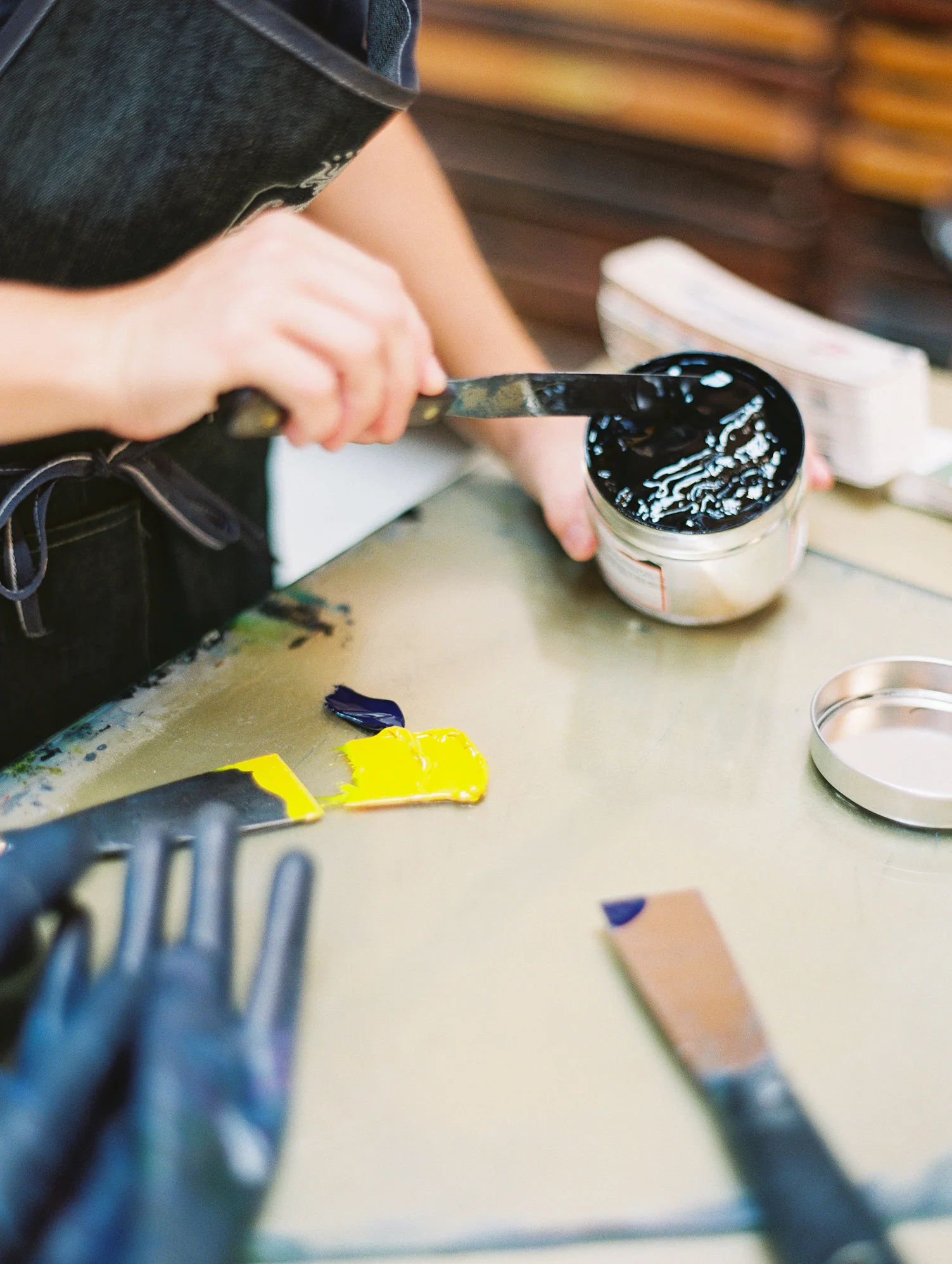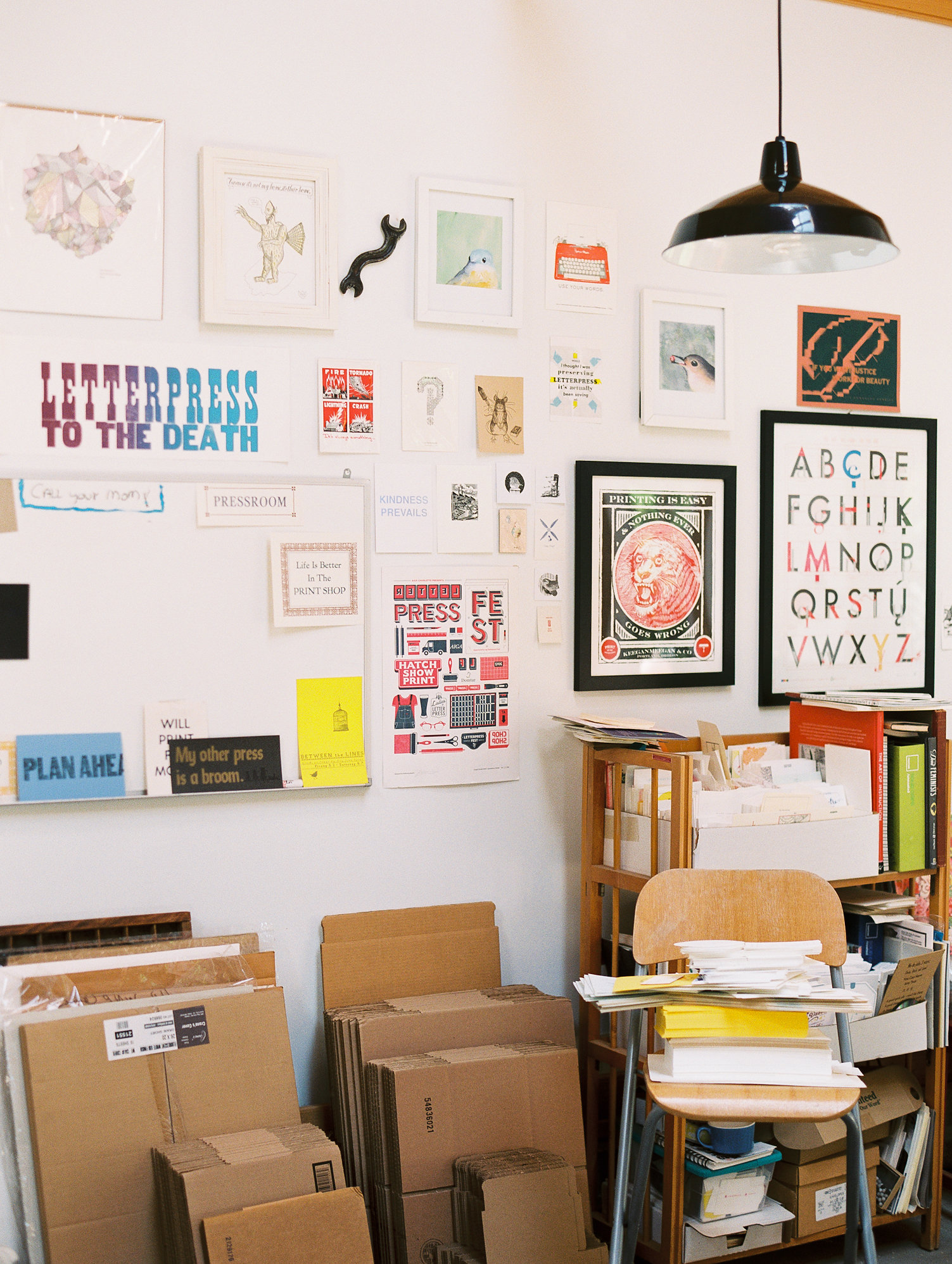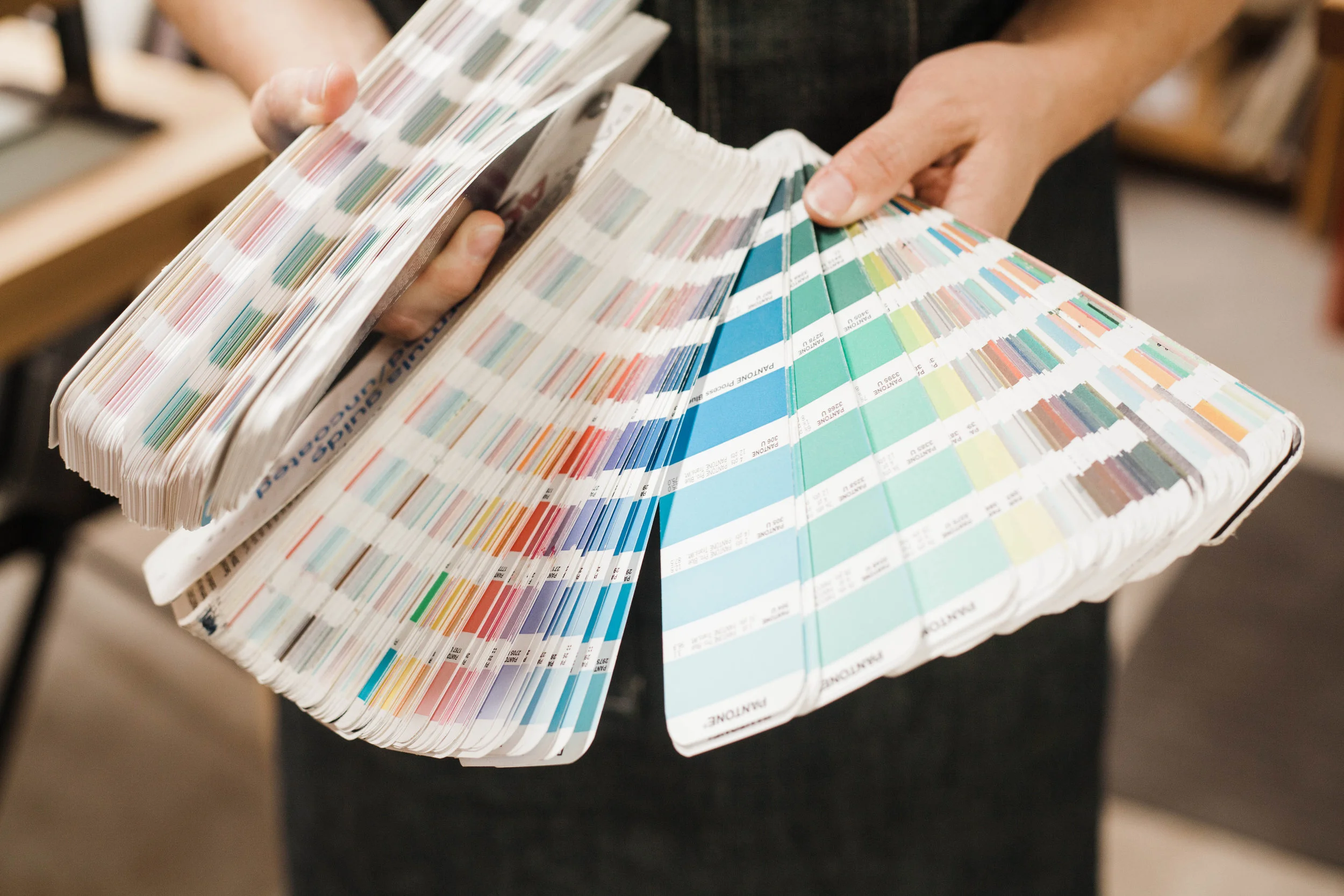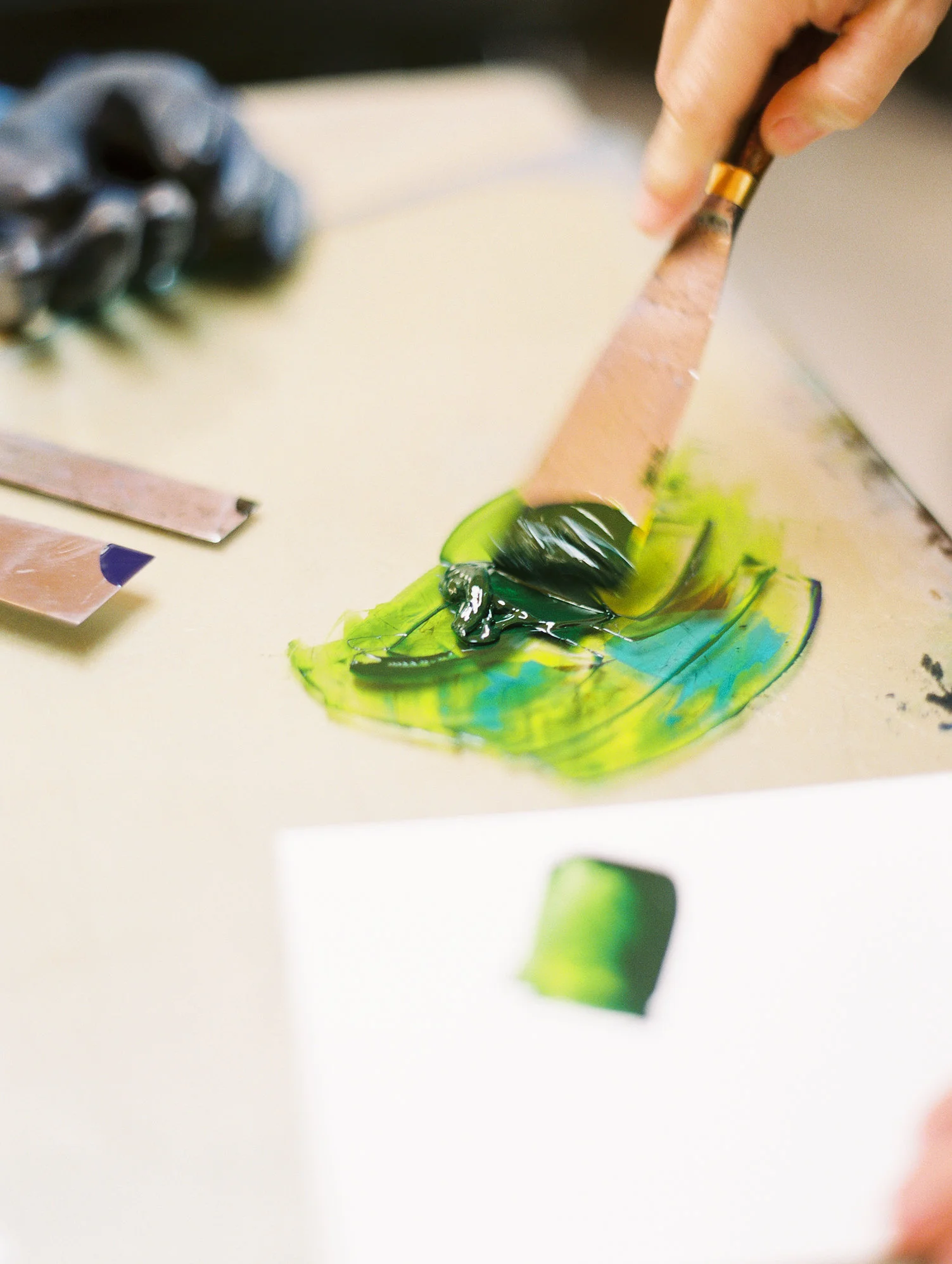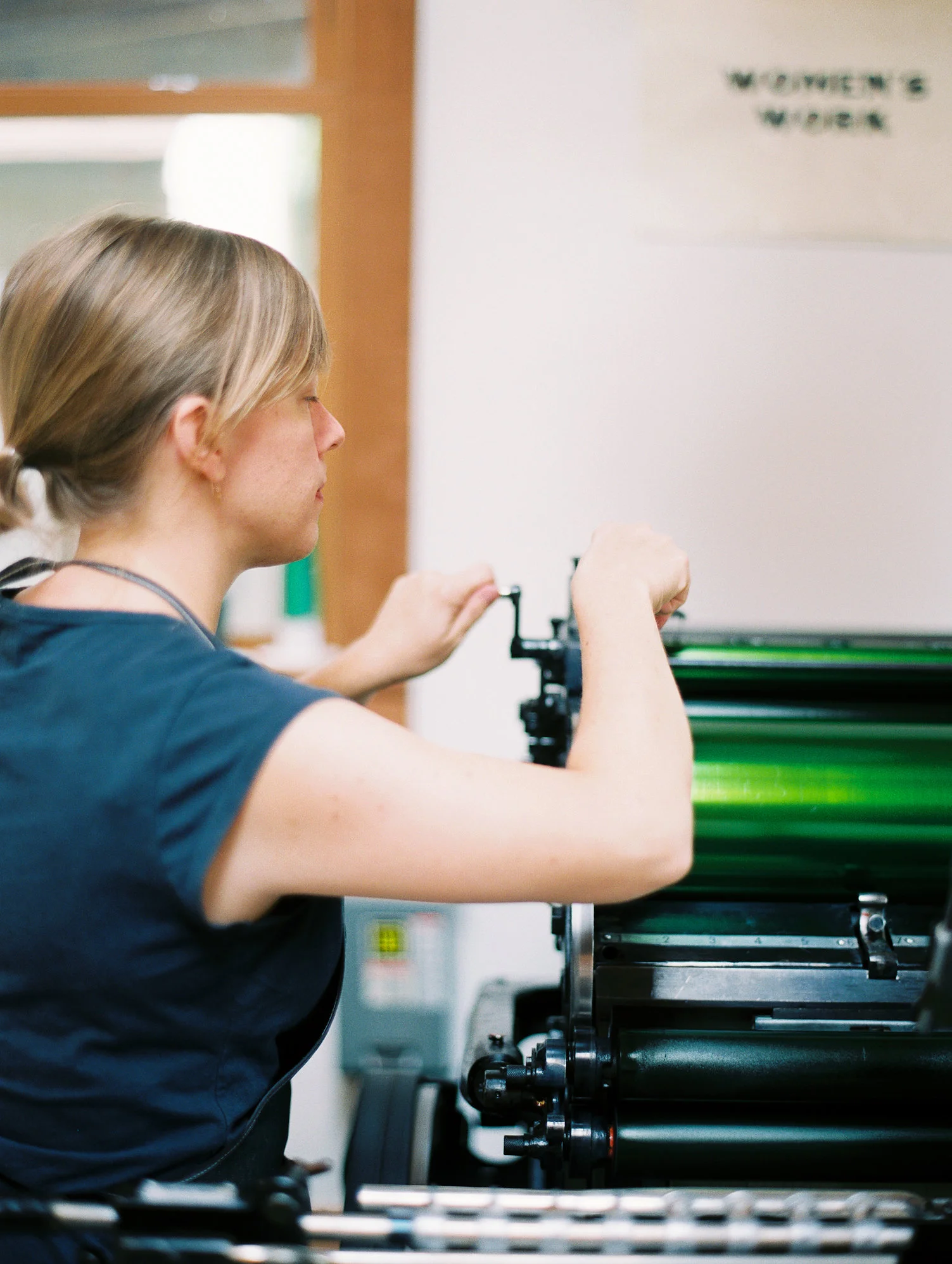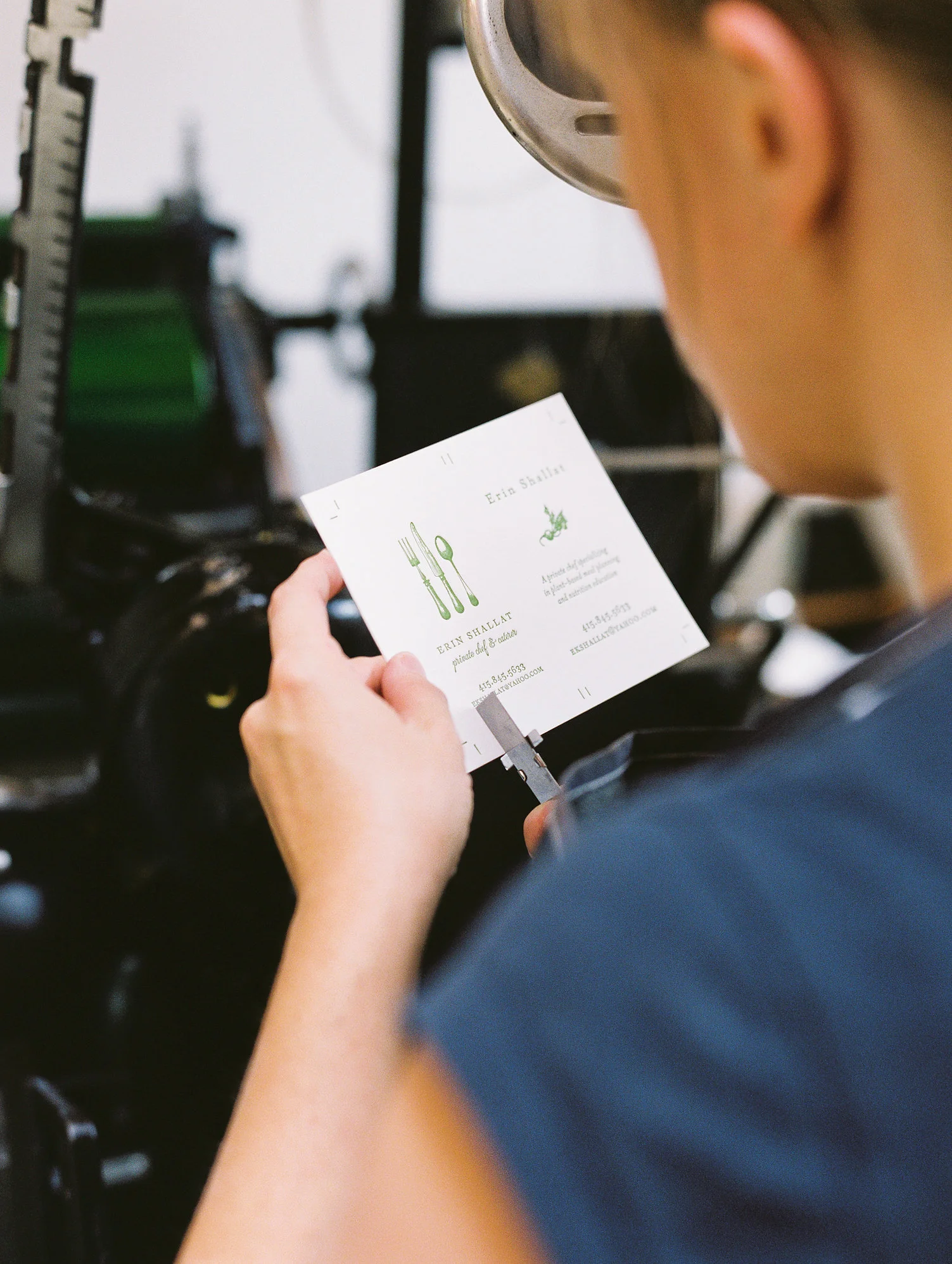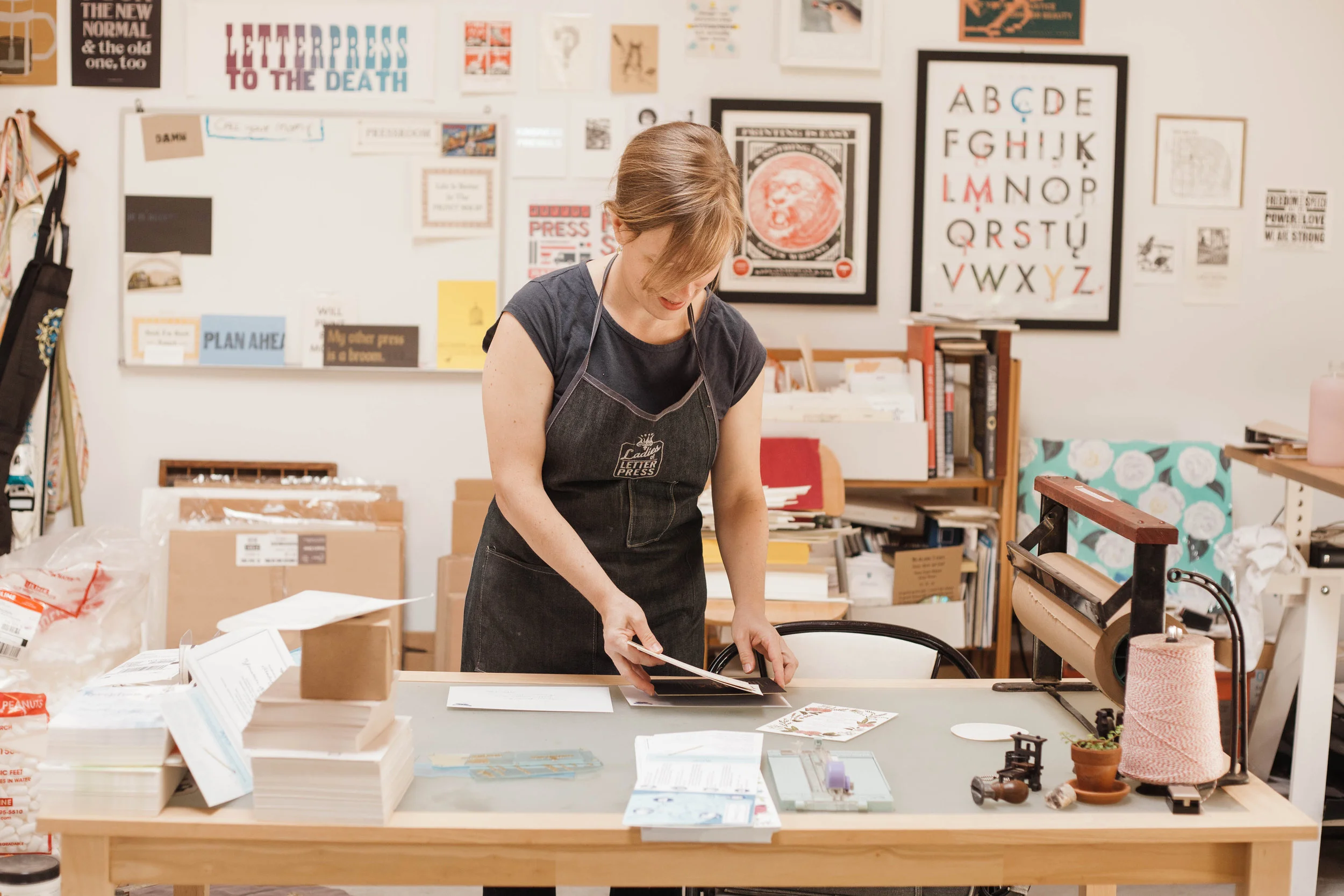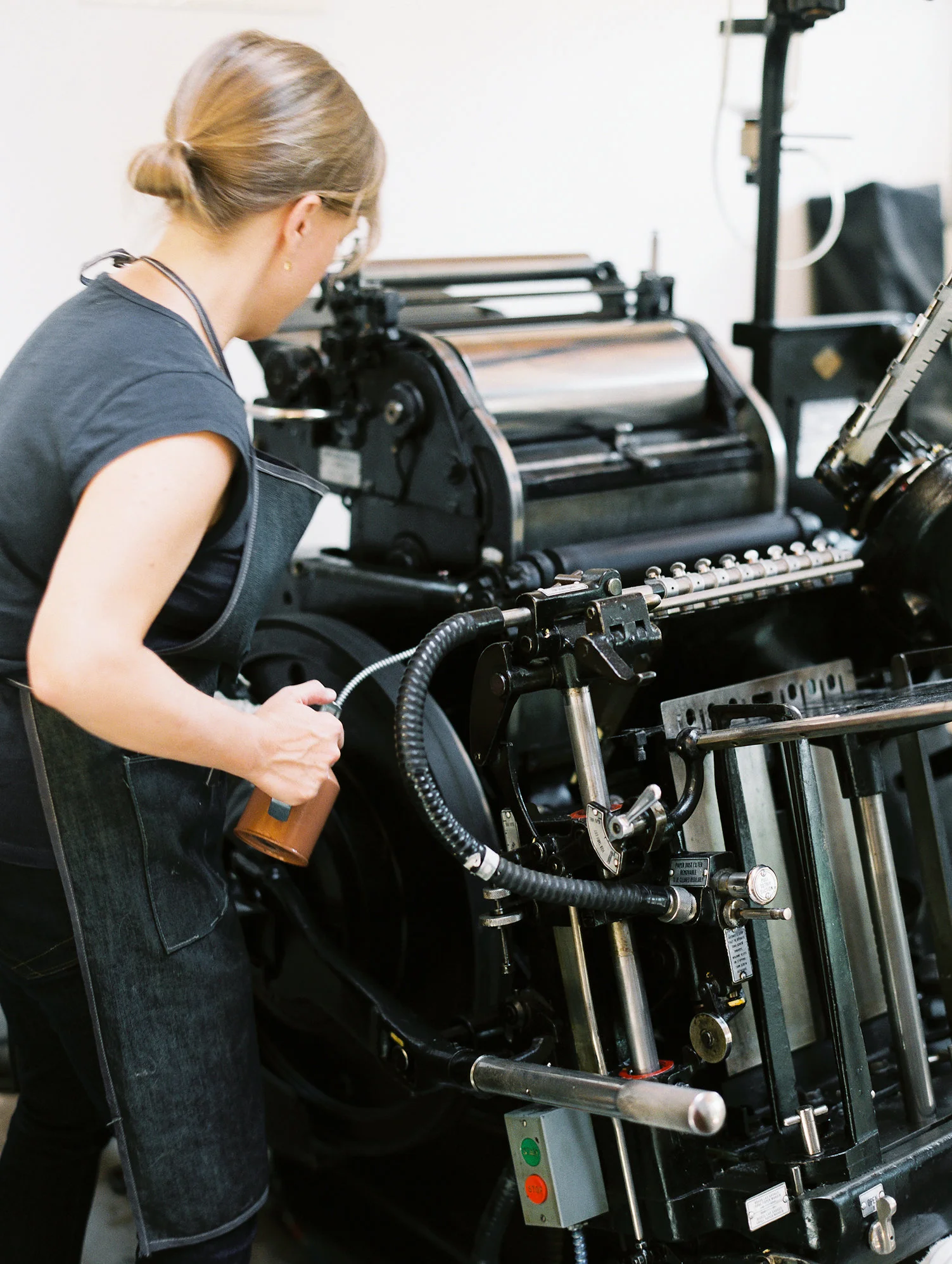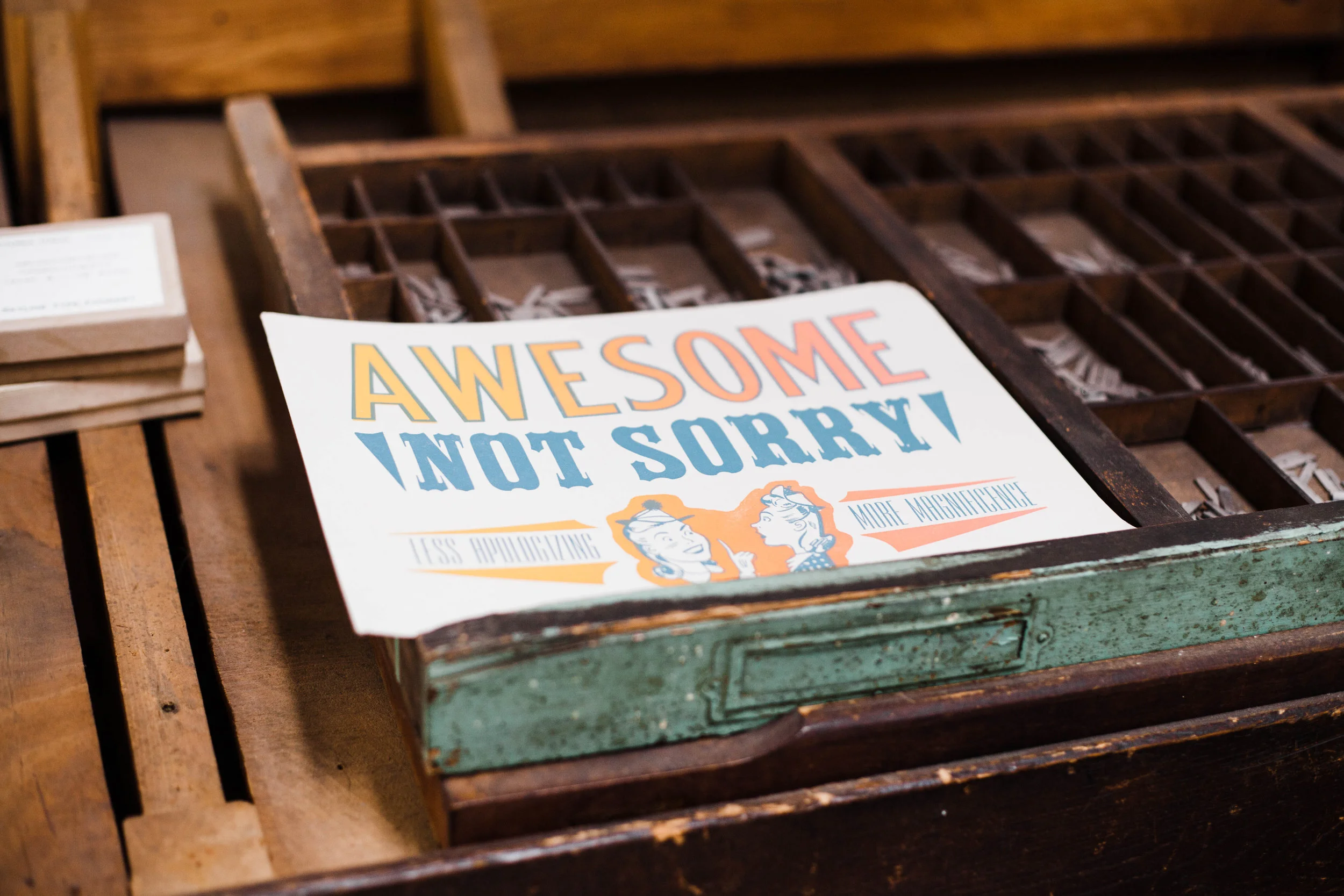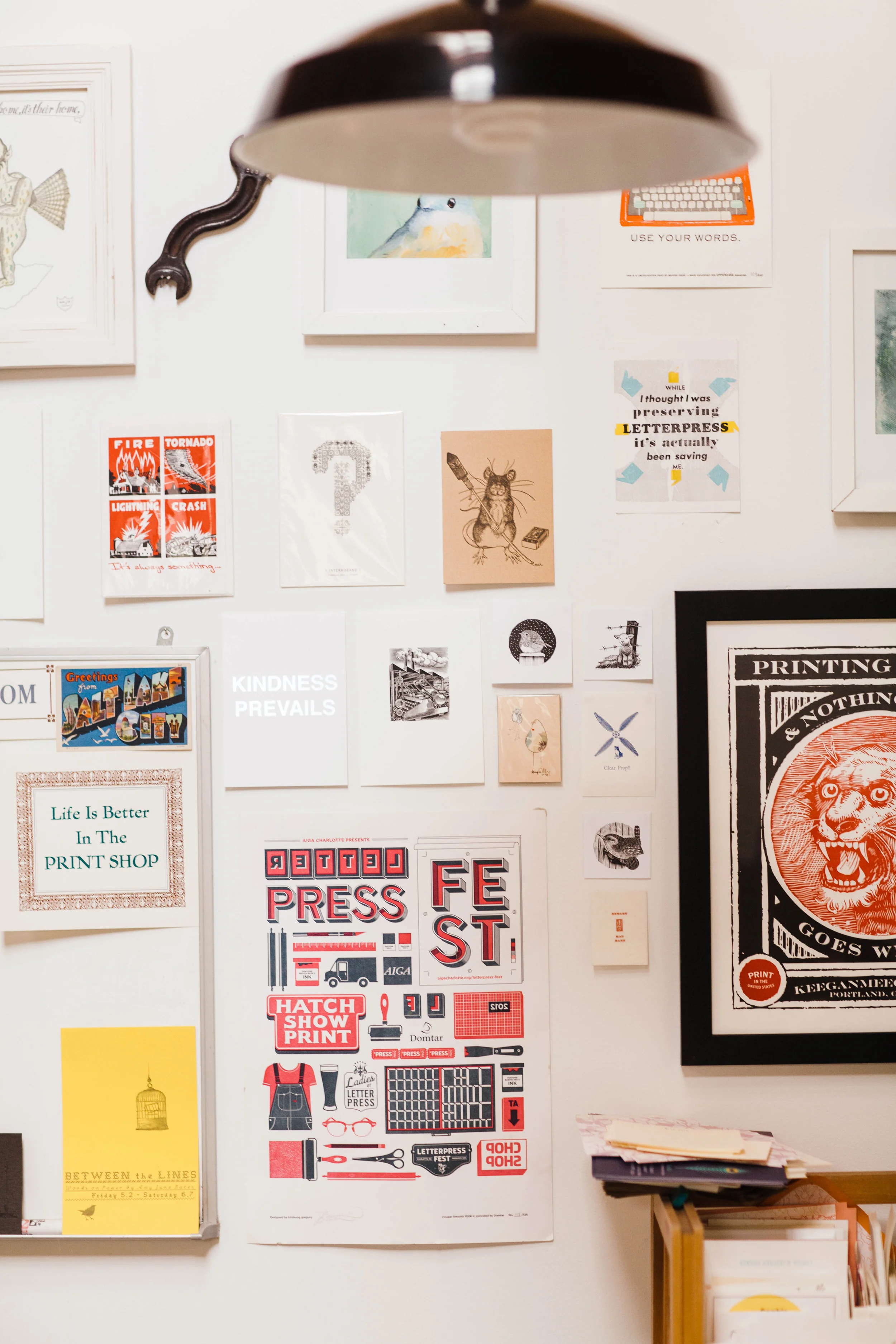The Day in the Life of A Letterpress Printer // Kseniya Thomas of Thomas-Printers Takes Us on a Studio Tour
/Meet Kseniya Thomas of Thomas-Printers!
Kseniya Thomas is the founder of Thomas-Printers in Carlisle, Pennsylvania, and she makes gorgeous letterpress papergoods for weddings and businesses all over the country. We were so intrigued that she is using presses from as far back as 1898 to create modern, playful designs that we wanted to understand her whole process. What is a day in the life of a printer like in the digital age?
Photos by Ashley Boyan and Kate Greenawalt
How do you typically start each day?
I guess like most small-business owners, I maximize my mornings by getting up early, drinking some coffee, running or reading, walking the dogs, drinking more coffee, and then, by 8 or 9, grabbing some further coffee and going out back to my shop. My commute is 30 seconds, as the shop sits behind my house. I take my me-time first thing in the morning when everything is still and quiet, but walking out to the shop means that it's time for work and, obviously, more coffee.
Once at work, I answer emails, write estimates (I try to get quotes turned around in about 24 hours), pull that morning's sample orders, and gear up for the afternoon's printing. I'm usually on press by noonish, but there are several steps before the press can actually get printing.
How do you prepare to begin a new project? What elements come together behind the scenes to make letterpress a reality?
There are lots of preliminaries before the press ever whirrs into motion. There's relatively little computer work necessary aside from estimating and billing and a little file prep to order the plates for printing; the rest is analog and hands-on. The pre-printing process can be summarized in five little words: plates, paper, ink, printing, finishing. Each project goes through the same steps from start to finish, and even simple projects need a lot of attention and time. Invitations go through quite a lot before they reach the guests!
Ordering photopolymer plates of the design is the first step. This process involves separating the client's file into its component colors and separating, if necessary, heavy ink coverage areas from areas that need less ink. I'll also drop in printer's marks to the file so that the disassembled parts can be put back together on press with ease and precision.
Next comes paper. I stock a variety of letterpress papers, all of which are 100% cotton. I'm lucky that there are papers being made again just for letterpress, and they come in a variety of soft, lovely colors. The sheets are much larger than the printing press can handle, so they get trimmed down on a big automatic paper cutter to a more manageable size. The fact that these “parent sheets” come in large sizes means that I can produce invitations or cards in any size at all.
Letterpress printers match ink colors using the Pantone system; Pantone standardized colors for all kinds of applications starting in the 1960s. The Pantone formula guide tells me how much of the basic component colors go to form the client's chosen color. I mix inks by hand and eye, and adjust as necessary till the color matches perfectly.
Once paper and ink are queued up, it's time to set up the press. Setup is pretty quick—10 or 15 minutes—and the rest of setup is making as certain as possible that the printing is going to look great the whole run through. The Heidelberg Platen press I use for production is a fast and precise machine, with mechanisms to suck up a single sheet of paper so that an arm can grab it and put it between the press bed (where the plate is) and the platen so it can be printed. Once printed, the arm delivers the sheet into a neat stack. The press does one color at a time, one sheet at a time.
During the print run, I monitor the ink levels and saturation, check random printed sheets for any signs of trouble on press (crookedness, uneven pressure or inking), and listen to the machine to make sure it's running smoothly.
Once printed, the lovely letterpress cards are “finished:” trimmed to their final size which will remove the printer's marks, edges painted, etc. Lastly, they get wrapped up all pretty, tied with a bow, and sent out into the world.
All my work depends on other people; the letterpress industry today is a shrunken-down version of the behemoth that used to be the graphic arts industry. I depend on the platemaker, papermills, ink manufacturer (who are still making inks for the offset printing industry), press-repairmen, digital or offset printers, the postal service. Also: people who love paper, handmade things, craft. Letterpress is a mix of heavy and light, tenuous and solid.
How did you find your passion for letterpress? How did you go about getting trained?
My love for letterpress grew slowly but surely from 2002 onwards. I liked it right away because I liked typography and had fun putting that together in setting type by hand. There is still nothing like seeing the printed page come off such beautiful old machines. My love for letterpress now comes from the pursuit of perfection in the process, and from my clients, and from my fellow printers, who are the best.
I started with a six-month internship at the Printshop of the Gutenberg Museum in Mainz, Germany. After that was over and I returned to the states, finding letterpress training was difficult, especially since I didn't have an art background. Filling this training gap was one of the reasons we started Ladies of Letterpress. I've mostly learned by doing, and by absorbing techniques from my fellow printers.
What special machinery is involved in the process? Can you describe it to us?
All of our machinery is pretty specialized graphic arts equipment—it takes lots of heavy metal to make delicate prints. We have hand-fed presses from 1898 and 1926 for odd-sized sheets and over-size sheets; automatic German-made presses for long runs and speed; little-bitty presses for print shop ambiance. Our rulers, called line-gauges, are heavy brass and are marked with special graphic arts-increments called picas. Our tools have a satisfying weight and heft, and the printshop smells like wood and oranges from the low-VOC solvent used to wash-up the ink. I love that all of my tools and machines are engineered for precision as well as speed and efficiency. It allows me to make a pretty intricate and involved product ready in time for the daily UPS pickup.
What kind of experience do you hope to deliver to clients? What kind of feedback have you received about your work?
Letterpress requires periods of sustained focus, and that is exactly what kind of experience I want my clients to have: focused and personal. If a client calls with a question, I'll be the one who picks up the phone to talk to them. I think printers are really aware of the fact that it's a gift and stroke of luck to be printing in this digital age, so I try to show appreciation to my clients by giving them the best product and experience I can. Clients can tell when they're being cared for, and I love receiving feedback on the quality of the work or my choice of wrapping paper. :)
How do you typically wrap up your days?
Beer and email, ha. Dinner, family time, a few household things—there's no shutting off the business brain, but I try to make time to be human, too.
Kseniya Thomas is the owner of Thomas-Printers, a commercial print shop, where she has produced letterpress social stationery and fine art for more than a decade. She's the co-founder of Ladies of Letterpress, an organization founded in 2008 and dedicated to the promotion and continuance of the art and craft of letterpress printing. Trained at the Druckladen des Gutenberg Museums in Mainz, Germany, Kseniya got her start setting type by hand. Her work has been featured in several letterpress books, design periodicals, and blogs. Kseniya, a Salt Lake City native, currently lives and works in Carlisle, Pennsylvania.
